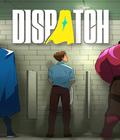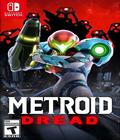Buy Metroid Dread
It's hard to believe that it's been almost 20 years since the last time the Metroid storyline advanced. Metroid Fusion, which was released in 2002, was the last chronological game in the franchise, with every other Metroid title being a prequel or remake. The long-rumored Metroid Dread seemed like it would never see the light of day when generation after generation of Nintendo console came and went without a sign. Thankfully, the story has finally moved forward, and it was worth the wait.
Metroid Dread follows from the story of Metroid Fusion. Samus Aran, now partially fused with the energy-draining Metroid creatures, succeeded in eliminating the dangerous X Parasites from the face of the universe — at least until footage of a live X Parasite was leaked to the Federation. As the only person immune to their life-draining abilities, Samus is forced to set out again and bring an end to the galactic threat once and for all. However, the X Parasites are only part of the danger, and as Samus explores the planet ZDR, she'll discover the history the creatures, the Metroids — and even the alien Chozo, who raised her.
Metroid Dread retains the same basic gameplay as the other Metroid titles. It's a 2D exploration platformer where you venture into dangerous enemy-filled areas to discover new powers and new abilities. In particular, it is based on the Metroid Returns mechanics, which means that in addition to Samus's powerful guns, she can also get up close and personal with melee attacks and counters. Thankfully, the melee counters are not quite as omnipresent as they were in Returns, making them feel like a part of your arsenal instead of the only thing you should be doing.
As is the norm for the series, you begin the game with only a few weapons and your weakest power suit, and you'll have to scavenge back everything Samus had before. This includes new gadgets, like the power to turn invisible or an air-dash as well as classics like Power Bombs, Super Missiles, and various suit upgrades. One thing I appreciate is that the game changes up the flow of power-ups. The Morph Ball and Bomb upgrades are more of a mid-game upgrade instead of the first ones you get, and it makes them feel more significant instead of a default ability.
Aeion Abilities make their return from Samus Returns but in a significantly more enjoyable form. Rather than being abilities that you have to toggle on and off, they are abilities that draw from a very rapidly regenerating shared pool of energy. The aforementioned invisibility and air dash both use Aeion, so you need to be careful when using them. If you use one, you can't use the other until your Aeion bar has time to recharge, and mistiming that can be deadly in certain circumstances.
One thing I specifically need to praise in Metroid Dread is how good the movement feels. As a franchise, Metroid has had a lot of different physics and movement speeds, but none feel as good as Dread. Samus is incredibly responsive and fast, and every action you need to take is available at the press of a button. By the time I got a few powers under my belt, I was moving around so smoothly that it felt like second nature to do everything I needed to. Dashing, countering, blasting, sliding — it all flowed together smoothly.
This also contributes to the fun of exploration in Metroid Dread. The game gently guides you along the primary path, and as you get new powers, the level design places ways to test those powers in your path. It's a small thing, but it makes you feel more like you're exploring and less like you're being commanded. Beyond that, it was fun to go off the beaten path and see what I could find. You can find paths that let you access items earlier than you need to, which is an awesome feeling. Even collecting more missile packs or health-ups contributes to the feeling of being an unstoppable beast.
Exploration isn't always an option, though. Scattered throughout the game are deadly robots called EMMIs. Functioning like an upgraded version of Fusion's SA-X mechanic, these incredibly powerful machines are an unstoppable foe. They patrol specific areas, and while you are there, they'll actively hunt Samus and respond to any noises she makes. Should they find you, they'll relentlessly chase you until you can either escape from their view or they catch you. Being caught is an instant-kill, but you have a brief window in which to counterattack them to get a chance to break free. Fail, and you're forced to an auto-checkpoint just outside the EMMI's patrol route. At certain points, you're given brief access to a powerful super-weapon to kill an EMMI, but the weapon burns out after a single defeated robot.
At first, I was expecting to dislike these "stealth sequences," but they're quite fun. Rather than slowly sneaking along, you're encouraged to plan your route and move quickly and decisively. Invisibility is an option, but it's more to let the EMMI sneak past than something you can keep on all the times, since it slows your movement and limits your movement options. Ironically, I found that trying to be sneaky was far less effective than just being confident and trusting in my movement abilities to let me escape. Countering also got easier with practice, and by the end of the game, I could reliably escape from EMMI if I got caught, which made it feel more like a challenge and less like a punishment.
If I have one complaint about Metroid Dread, it can be a bit repetitive at times. There are several minibosses that you face multiple times, with only a slight variation in patterns to keep them feeling fresh. They are fun fights, and there's something undeniably appealing about going from flailing against the first one to effortlessly countering and blasting them to pieces by the last one, but I would've rather seen more variety. Likewise, the various areas feel too similar at times. While there is variety, you spend a lot of time in interconnected corridors, and none of the areas have the personality of Super Metroid's distinct settings. It feels like the problems that Samus Returns had, but it's been significantly toned down.
Metroid Dread also looks great. The environments are crisp and well-animated, and the game runs (mostly) smoothly. The only time I noticed any significant slowdown was while I used the Pulse Scanner in the middle of an enemy-filled area, and even then, it was only for a few moments. Samus has amazing animations, and the game sells the idea that she is a hyper-competent bounty hunter better than any other game in the franchise. The music is nicely atmospheric, and what little voice acting there is fits the tone of the game well. There are no "The Baby" speeches here.
Metroid Dread is a fantastic return to form for the 2D Metroid titles. Building upon the lessons of Samus Returns, it captures the feel of Metroid nearly perfectly. It's incredibly fun to play, balances the story and gameplay in the way a Metroid game should, and in general, it's just excellent. Its few flaws stood out more in retrospect than while I was playing the game. It's easily one of the best 2D Metroid titles, and it's a fantastic way to close out the ongoing storyline.
Score: 9.0/10
More articles about Metroid Dread











 The first 2D Metroid game with a new story in 19 years, Metroid Dread is an action-adventure game where players control bounty hunter Samus Aran as she faces a robotic enemy on the planet ZDR.
The first 2D Metroid game with a new story in 19 years, Metroid Dread is an action-adventure game where players control bounty hunter Samus Aran as she faces a robotic enemy on the planet ZDR.


























